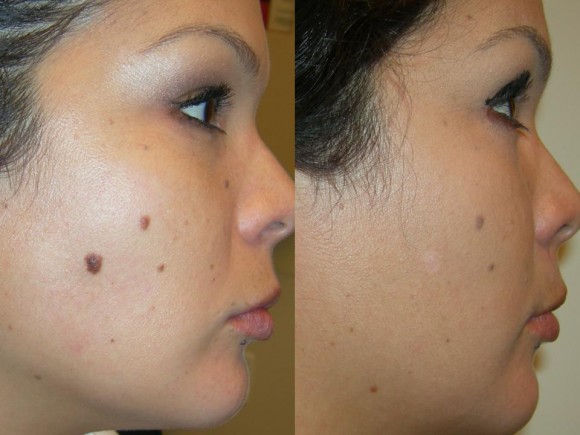How to Spot Early Signs of Skin Cancer on Moles

Worried About a Mole?
The finding of an unusual mark, lump, blemish, mole, sore or any changes in the way an area of skin looks is usually a cause for a scare in people. The look and feel of skin blemishes and markings can determine whether or not you should seek attention from your doctor or dermatologist. Monitoring areas of your skin that are prone to sun exposure or you have previously had a mole or skin check done can help to prevent the growth and continuation of moles and the associated cancers that go along with a mole.
If you are worried about a mole, there are specific signs to look for before completely freaking out and requiring medical assistance to alleviate your mole concerns. Your dermatologist can offer treatment plans and in most cases get rid of moles on your first office visit. In the hot Texas sun, we run the risk of being exposed to multiple forms of skin cancers that are brought on by the sun and various forms of sun and heat exposure. Dermatology
Consults of Frisco provides resources and treatments for moles, markings, blemishes, and patches of skin that cause worry.
The ABCDE is a great guide and resource to the usual signs of melanoma. Be on the lookout for these, and monitor and spots that have any of the following features:
A is for Asymmetry: One-half of a mole or birthmark does not match the other.
B is for Border: The edges are irregular, ragged, notched, or blurred.
C is for Color: The color is not the same all over and may include different shades of brown or black, or sometimes with patches of pink, red, white or blue.
D is for Diameter: The spot is larger than 6 millimeters across (about ¼ inch – the size of a pencil eraser), although melanomas can sometimes be smaller than this.
E is for Evolving: The mole is changing in size, shape, or color.
Some melanomas or moles may not specifically follow these rules. You know your body better than anyone else, so it is important to tell your doctor or dermatologist about new spots on the skin, or growths that look different from the rest of your moles.
Additional Warning Signs:
- A sore that doesn’t heal – sometimes moles start off looking like sore wounds.
- The Spread of pigment – changing of the border or surrounding skin should be noted.
- Redness – new swelling beyond the border of the mole is a warning sign.
- Change in sensation – itchiness, tenderness, or pain should be taken seriously.
- Change in the surface – scaliness, oozing, bleeding or the appearance of a lump or bump needs to be brought up.
Understanding your body and your warning signs for moles will be the best protector against skin cancer this summer and all year round. Following up with regular visits to your dermatologist to monitor and consult on your skin conditions will assist in the prevention and treatment of moles becoming melanomas.

